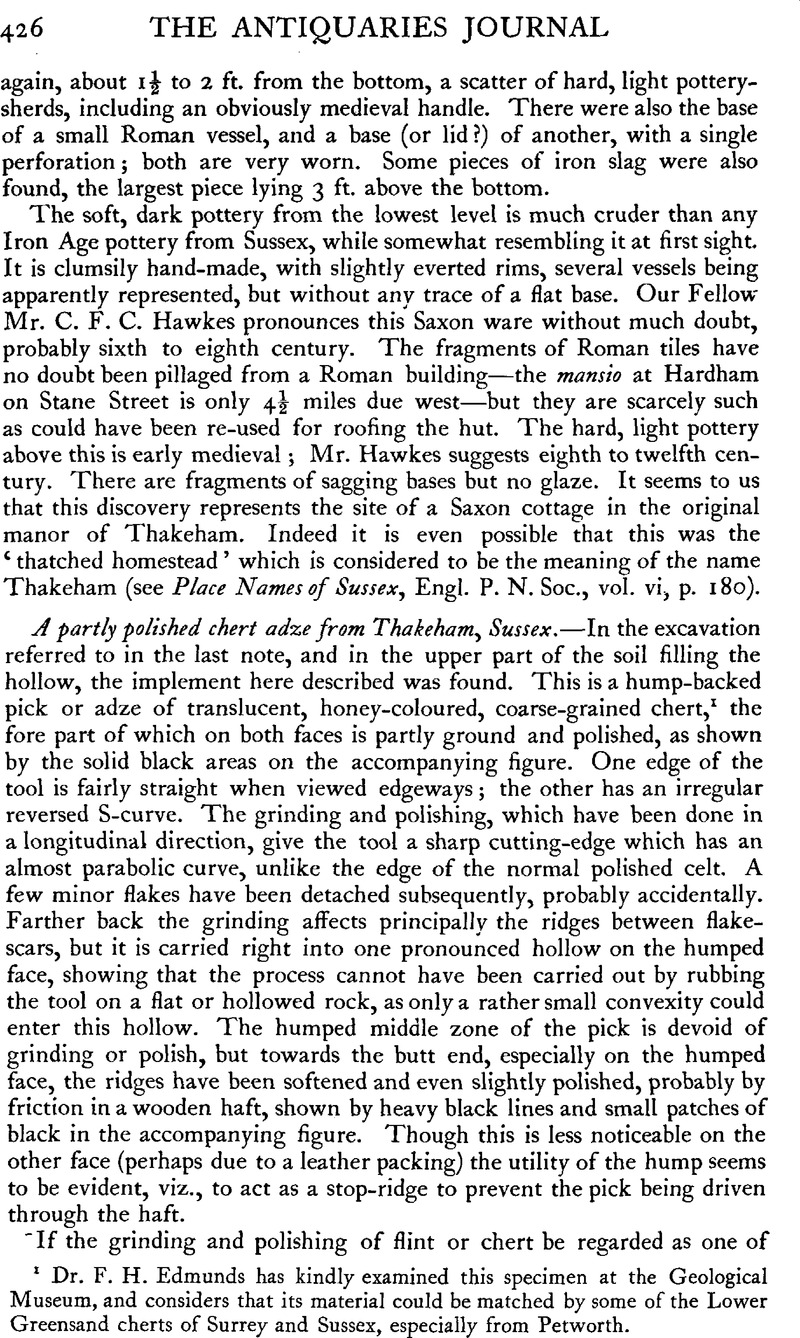No CrossRef data available.
Published online by Cambridge University Press: 08 January 2012

page 429 note 1 Dr. F. H. Edmunds has kindly examined this specimen at the Geological Museum, and considers that its material could be matched by some of the Lower Greensand cherts of Surrey and Sussex, especially from Petworth.
page 427 note 1 Corn, domestic animals, and pottery being the other three. In regard to polishing, certain apparent exceptions to this generalization have been pointed out by the Director (Proc. Soc. Antiq. xxx, 164–5 ; xxxi. 51–3). The former instance appears, however, to be a discoidal polished flint knife of early Bronze Age type (see Proc. Preh. Soc. East Anglia, vi, 40–54). In the Scandinavian mesolithic (Ertebølle) period grinding was the normal method of shaping implements made of stone other than flint or chert.